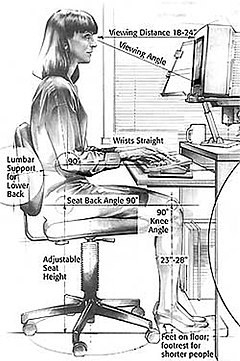Col Finnie has provided the following article in response to OHS compliance checklists:
It’s gotta be time to bite-the-bullet. The wish-fulfilment approach – that people will apply some sort of system to how they look after safety because that’s the only sensible way to do it – well, that’s not working, particularly it seems, in the small business area.
Time to regulate for the obligation to have something that can, at very least, lay the foundation for a comprehensive systematic approach. Seems just a bit whacked to me that a demonstrable systematic approach is required once a worker is injured (with the return-to-work obligations) and yet there is nuthin’ for the prevention stuff.
Getting a slapping from a magistrate for having no safe work procedures (as one part of a systematic approach) would work as an incentive if people were busted as often as they are for road traffic naughtiness; but we know that frequency of OHS busts are just not going to happen.
The Great Leap Forward (Into The Bleeding Obvious) would have to be regulated in a smart way. Continue reading “Regulating The Great Leap Forward (Into The Bleeding Obvious)”

